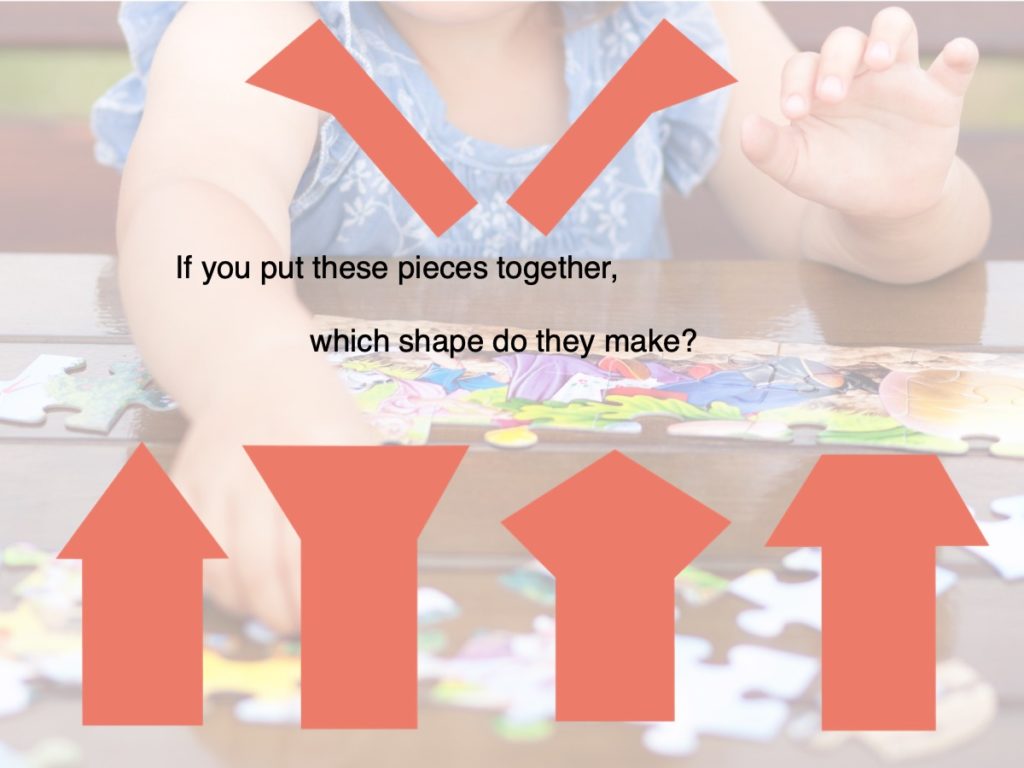
The great news is that spatial skills are malleable. We can improve our spatial skills through training and experience. For young children, this is as simple as playing with things like puzzles, blocks, and board games. When a child rotates a puzzle piece to see if it fits or considers where to place a block, she is using spatial thinking. You can encourage children to use spatial thinking around the house or classroom, too. Have children stack plates on top of each other after lunch, or put all their toys away on a shelf so they fit. Children who spent more time engaged in spatial play are better able to recreate a block pattern from a 3D model or photo.
There are also lasting benefits to spatial play. Studies that follow children over time show that the effects of spatial play remain for months. In one study, researchers observed children’s puzzle play at home six times between 2 and 4 years of age. When children were 4.5 years old, they played a spatial game. For the task, children saw images of shapes split in two. They had to choose which shape the two pieces would make when put together. Children who played with puzzles more often at home picked more of the correct shapes. Other researchers have found similar results with other spatial play, like blocks. Research shows that early spatial skills can support children’s later math achievement.
-
- Direction and movement
- refers to the path along which a person or object moves
- Shape awareness
- is the ability to recognize and identify shapes
- Space and position
- refers to the relationship between objects
- Spatial awareness
- includes understanding shape, size, space, position, direction, and movement
- Spatial language
- refers to words that describe the location of objects in space
- Spatial thinking
- is a set of mental skills that we use to reason about the shape, size, position, direction, and movement of objects